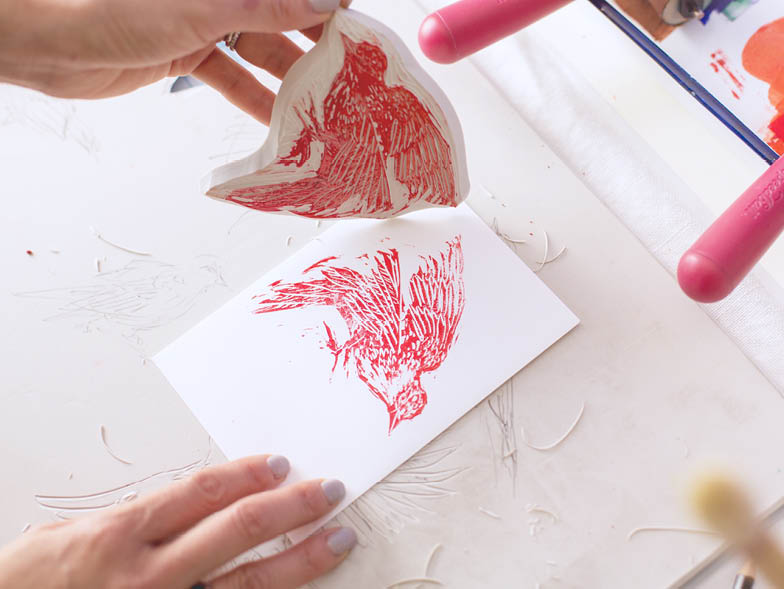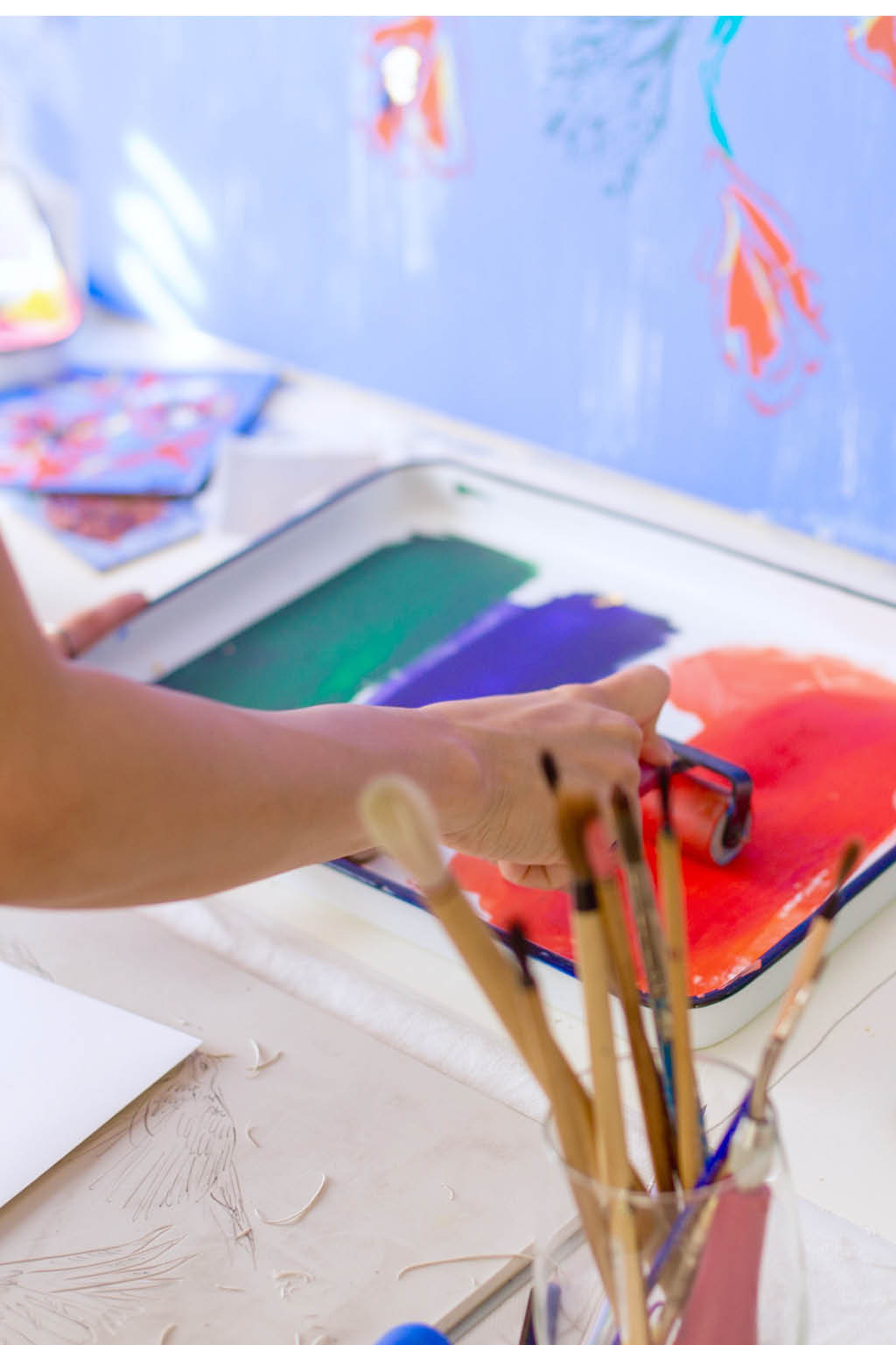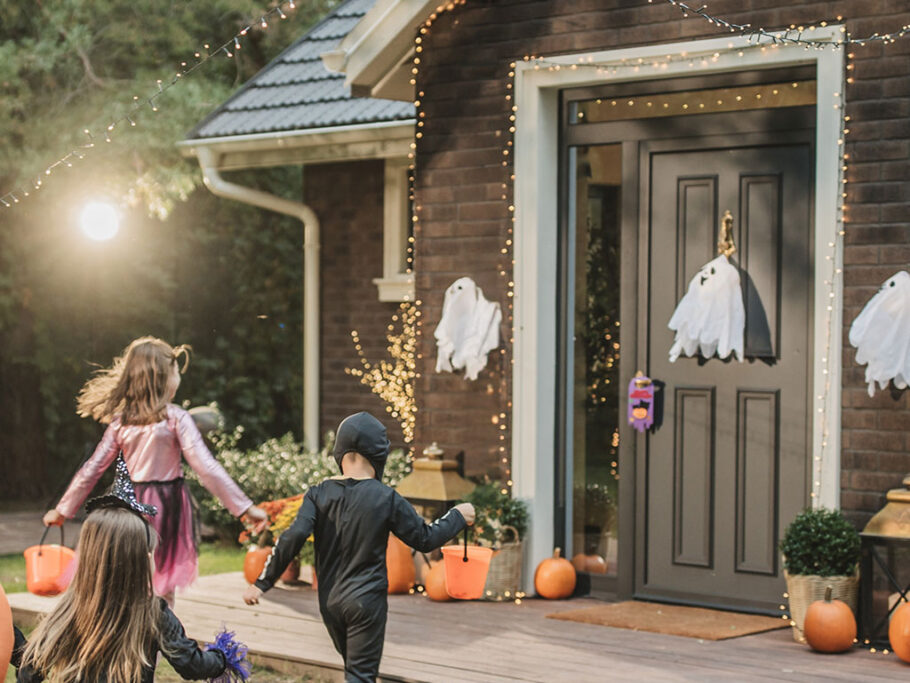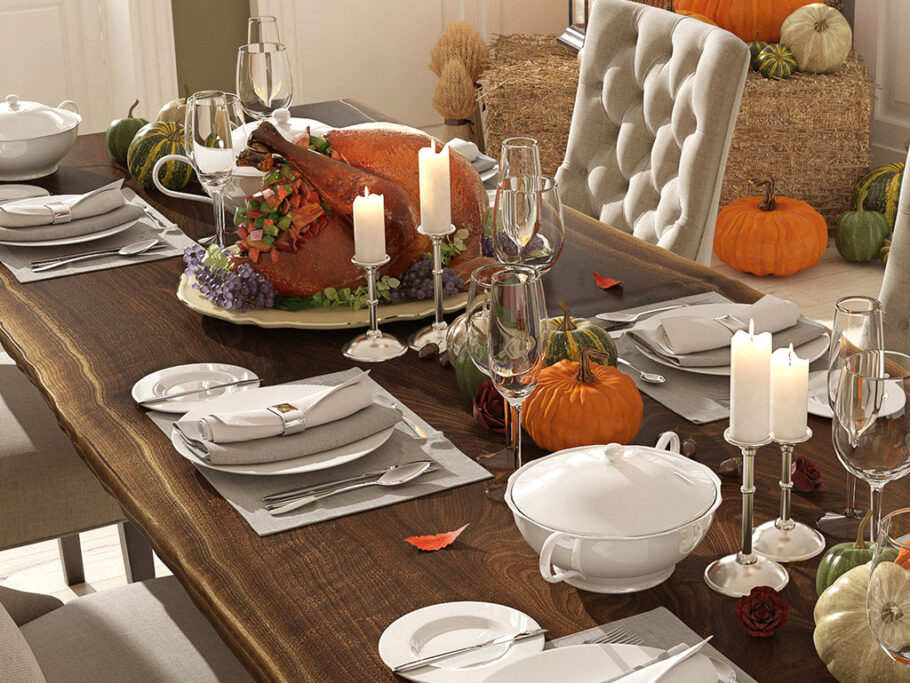Korean Art for a New Generation: Krane Home
Wallpaper has been used as a design tool for centuries, but it fell out of favor over the past few decades as more people painted their walls. Over the past several years, however, wallpaper has had a renaissance in the design world. Sharon Lee of Krane Home is leading the revival of the medium by adding the ancient beauty of Korean folk art to the iconic wall decoration.
You come from an artistic family. How did they influence your love of art and your eventual career path? How much of your artistic ability do you think was nature versus nurture?
I owe a lot to nature since my grandfather was an artist in Korea and my mother is an accredited painter in Korean folk art, and both of them are very talented. My family really encouraged my artistic abilities from a young age. I have so many memories sketching, drawing, and painting together— mostly farm animals with my grandfather and flowers with my mother.
My mother made sure I was exposed tothe best art classes and teachers, both in school and outside of school. I learned to oil paint when I was in fifth grade and once had an art tutor who used to be an old-school Disney animator! When I was accepted to UCLA’s art school, my parents and grandfather were so proud that I would continue the family lineage. I guess I was kind of bred to be an artist, actually, which I think is pretty rare!

You grew up in Los Angeles, went to college there, and opened your studio there. Tell us how this influenced your art:
People are not afraid of color in this town, and I love it! Bright, saturated colors look so great in our warm light. It’s also just part of the culture here. The fashion, the art, the architecture—Los Angeles is historically the place where everyone is encouraged to take risks and do something new. I recall wearing the wackiest things in high school, and no one thought anything about it (or at least that’s what I remember). You can definitely see its influence on my art, textiles, and wallpaper. I love taking risks. A pattern with fifteen-inch tigers all over it? We’ve got you covered!
You’ve studied both art and design. Would you consider yourself more art-centric, design-centric, or an even mix between the two?
I don’t think there should be a separation between the two. I truly believe one should study fine art and then design. To be a great designer, you have to have the foundation of fine art at some point. Everything—proportion, scale, texture, and colors—relates back to the core principles. Even if you are intending to break the rules, you should know what rules you are breaking to break them well.
You studied under renowned designer Michael S. Smith. What did you learn from him?
I learned so much working at Michael Smith. Since I didn’t go to school specifically for textile design, my education started as the sample librarian at the Michael Smith showroom Jasper and grew from there. I eventually became a designer working in his office, so the amount of fabrics, art, and wall coverings I was able to work with was incredible, and I fell completely in love with textiles and wallpaper. I learned what types of fabrics and wallpaper—the scale, color, and texture—are easy for a designer to incorporate into a scheme, and what kinds of statement patterns are successful as an anchor to a room. That’s why I design a healthy mix of bold patterns, medium-scale patterns, small-scale patterns, and plain textures for the line. You can choose wallpaper for the whole home from one line. Designers love the ease of that.
What are some of the characteristics of traditional Korean folk art forms? Are you hoping to popularize them for a modern audience through what you do?
Throughout Korean art, most everything portrayed is a stylized representation of its true form, usually taken from nature, folktales, or events surrounding the king and his court. I love that there is always a deeper meaning behind each symbol, and that paintings were used for specific purposes: a wedding, a royal ceremony, or to bring about good fortune. Peonies were painted on screens for weddings to bring about abundance and wealth to the couple during their marriage. My mother painted a traditional peony screen for our own Korean wedding ceremony at our house! These days, as we all search for authenticity and meaning, I know Korean art really resonates with the current generation.

What’s more valuable to you: intricate detail or vivid color?
My art usually has detail and bright colors, so that is a very tough question to answer! Even if a client is requesting a neutral painting, I like to sneak in some pops of color. Contrasting loose brushstrokes and intricate detail is an effective way to draw the eye around a painting, though, so you really have to have both.
You value handcraftsmanship with what you create. What do you think it brings to your work and to your customers?
In our modern world, things are often carelessly mass-produced, so there has been a huge backlash to that and a newfound appreciation for the handmade process. When something is created by the artist’s hand, when you know that each square inch of wallpaper was created from an artist’s painting and locally hand printed, you have a whole new reverence for what you buy. When there is an authentic story behind the process, there is love and positive energy you can bring home and have a piece of. The Krane customer is very savvy and loves knowing the whole process, as well as the story behind the work, and is proud to make an investment in something beautiful that is handmade to order for his or her home.
What’s the process for creating your wallpaper and fabric designs? How long does it take for you to create one?
I work almost a year out from the launch of new patterns. There is so much that goes into making each pattern. First, the original paintings are created. This involves a lot of sketching and experimentation. To create the main elements, I sketch the forms with pencil onto rubber sheeting, which I carve out by hand in negative and block print onto paper. These are done to full scale—what you see in the fabric and wallpaper is exactly the size of the original blocks. My work is a combination of brush painting and the carving-and block-printing technique. There are a few departures, too. For example, Peony Forest, which was created from an eight-foot brush painting I made using a ladder in my studio, became a fabric sold as a custom-length panel.
Once the final artwork is done, the imagery is separated by color and burned onto films and silk screens, one for each color in the design. Meanwhile, the color palettes are created in the studio by mixing paint to come up with the perfect shades for the season. Each pattern will have two to four colors in the design, which will all be hand mixed one by one in the workroom for the first strike-offs (or tests). Each colorway of a particular pattern requires several tests to get the colors just right. Sometimes the design needs to be tweaked, and I go back a few phases. The final strike-offs serve as the control samples used to print the final yardage and rolls of fabric and wallpaper, all done in our LA workroom by hand, one color at a time, down forty-yard tables.

What types of tools do you use in your process?
I use lots of different tools in my process since my work is multimedia. They include paintbrushes from Korea, traditional drawing supplies, watercolor brushes, house-painting brushes, gold-leafing brushes, block-printing brayers and palettes, linocut and carving tools, X-ACTO knives, and palette knives. I have the entire art store in my studio! One of my favorite non-art-supply tools is my hair dryer.
How do you go about choosing the themes and colors you create?
My work is inspired by Korean folk art, so I am constantly observing what paintings my mother is working on, as well as using my formal training in the traditional techniques. I also love poring through all my books filled with traditional Korean art, ceramics,objects, furniture, and garb. There is an endless amount of inspiration to be found there. The colors really come from my own vision of what I want my line to be. I want it to be universally appealing, bright, and bold, but in shades that are both interior designer-and client-friendly.
Have you ever experienced self-doubt about your work, or have you always been confident in the work you’re doing?
All artists know that for almost every painting or project there are phases the work goes through. Some days I am convinced it’s the greatest thing I’ve ever painted, but as I continue working on it, there comes a point when I question myself or the direction of the piece. So I take a little break, and when I come back to the piece, it comes full circle. Because I’m someone who sees the vision of what the piece will look like before I even begin, I’m usually happy with it in the end.
The crane is in your company name, in your logo, and in some of your artwork. What does this bird symbolize for you?
The crane symbolizes longevity in Korean art. It’s a highly auspicious and powerful symbol. I picked it because I wanted to build a company that would be around for generations and is not driven by trends but authentic inspiration rooted in fine art.

You’ve taught your art at workshops. What do you enjoy about passing on your knowledge and techniques to others?
The beauty of linocut and linoleum-block printing is that it’s something even a beginner can create with a simple block. I’ve never seen a block, even a wonky one, that doesn’t create something unique and beautiful. The best part is the print comes out differently each time, creating this gorgeous texture. It’s really addicting once you get into it. So I definitely enjoy spreading the love of block printing and seeing the discovery unfold for a beginner.
Your solo work has been featured at various exhibitions. What does this mean to you personally?
My exhibition work is my most emotional and personal. While I am also very passionate about the collaborative process of private commissioned artwork I create for my clients, the work for my shows is created entirely for myself without a client in mind. The colors are usually brighter, and I like to experiment with new techniques. These works sometimes end up in my own home since I have a hard time parting with them—and so does my husband!
In the twenty-first century, some people have a negative reaction to wallpaper. What would you say to them about the beauty of wallpaper and its contemporary style?
Wallpaper has had a true renaissance in the past few years. Because wallpaper is usually more expensive than simply painting a room, it used to be relegated to higher-end homes designed by decorators. When I started my company, however, there was a low hum of wallpaper starting to create mass appeal. Now, I am amazed at how trendy it has become. Just look on Instagram! These days, everyone wants a piece of the wallpaper craze. Even young renters are papering an accent wall here and there to recreate that designer look they saw on Pinterest. A misconception is that wallpaper devalues a property and is hard to remove. More and more high-end staged homes are using wallpaper to elevate the design and create that warm, homey feeling. Buying a home is an emotionally driven purchase. For the right buyer, designer wallpaper can enhance that overall feeling. There is nothing like wallpaper to completely change the feel of a space and make the most impact.
What does creativity mean to you? What would you be doing if you weren’t an artist?
My friends who are lawyers, in marketing, or in PR are always commenting on my art and saying how creative it is. In my opinion, drafting a brilliant legal contract is just as creative as painting, just in another medium. We are all artists! My father is a doctor, and he always said I would have made a great surgeon because I’ve had this freakish dexterity from a young age. So, if I weren’t an artist, I probably would have still been an artist but as a plastic surgeon!
What has been your most satisfying career achievement to date? What do you hope to still achieve in the future?
Surpassing our sales goals this year. As an artist, you tend to forget to celebrate the small achievements since everything builds gradually, so it’s nice to look at the numbers and see how far you’ve come. We are also branding as Krane Home to build a full high-end home decor and lifestyle company. Maybe one day you will see Krane Home brick and mortar!
For more info, visit kranehome.com.























